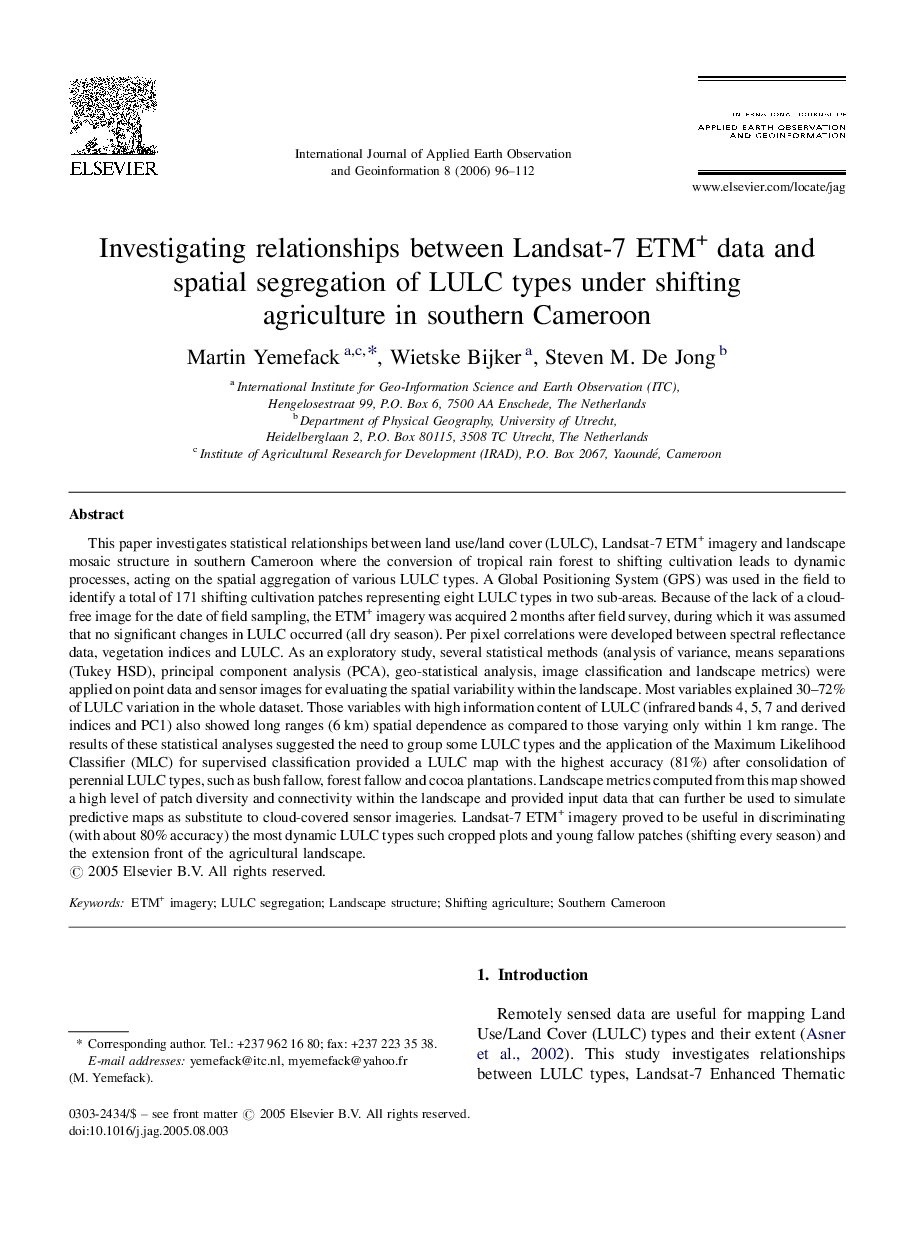| Article ID | Journal | Published Year | Pages | File Type |
|---|---|---|---|---|
| 4465402 | International Journal of Applied Earth Observation and Geoinformation | 2006 | 17 Pages |
This paper investigates statistical relationships between land use/land cover (LULC), Landsat-7 ETM+ imagery and landscape mosaic structure in southern Cameroon where the conversion of tropical rain forest to shifting cultivation leads to dynamic processes, acting on the spatial aggregation of various LULC types. A Global Positioning System (GPS) was used in the field to identify a total of 171 shifting cultivation patches representing eight LULC types in two sub-areas. Because of the lack of a cloud-free image for the date of field sampling, the ETM+ imagery was acquired 2 months after field survey, during which it was assumed that no significant changes in LULC occurred (all dry season). Per pixel correlations were developed between spectral reflectance data, vegetation indices and LULC. As an exploratory study, several statistical methods (analysis of variance, means separations (Tukey HSD), principal component analysis (PCA), geo-statistical analysis, image classification and landscape metrics) were applied on point data and sensor images for evaluating the spatial variability within the landscape. Most variables explained 30–72% of LULC variation in the whole dataset. Those variables with high information content of LULC (infrared bands 4, 5, 7 and derived indices and PC1) also showed long ranges (6 km) spatial dependence as compared to those varying only within 1 km range. The results of these statistical analyses suggested the need to group some LULC types and the application of the Maximum Likelihood Classifier (MLC) for supervised classification provided a LULC map with the highest accuracy (81%) after consolidation of perennial LULC types, such as bush fallow, forest fallow and cocoa plantations. Landscape metrics computed from this map showed a high level of patch diversity and connectivity within the landscape and provided input data that can further be used to simulate predictive maps as substitute to cloud-covered sensor imageries. Landsat-7 ETM+ imagery proved to be useful in discriminating (with about 80% accuracy) the most dynamic LULC types such cropped plots and young fallow patches (shifting every season) and the extension front of the agricultural landscape.
